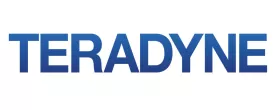Flexible Test Strategies Keeping Pace with Semiconductor Evolution
Automated test equipment (ATE) is positioned to support the industry’s long-term growth, ensuring scalability and reliability.
The semiconductor industry is transforming, driven by advancements in AI, advanced packaging, heterogeneous integration, and edge computing. As semiconductor design and manufacturing grow in complexity to meet these needs, flexible test strategies emerge as the linchpin for balancing yield, cost, and quality.
The automated test equipment (ATE) sector plays a critical role in not only ensuring these complex, high-performance chips meet stringent quality standards but also preparing the industry to navigate a steady stream of future challenges.
Innovative test strategies are essential in this effort, encompassing comprehensive options that optimize the cost of quality from wafer to final test and system-level testing.
With flexible solutions – for example, the ability to shift tests left or right to other insertions – manufacturers can determine the ideal test approach based on all factors such as cost, test time, and more.
To read the full article, click here
Related Chiplet
- Interconnect Chiplet
- 12nm EURYTION RFK1 - UCIe SP based Ka-Ku Band Chiplet Transceiver
- Bridglets
- Automotive AI Accelerator
- Direct Chiplet Interface
Related Blogs
- Advanced Packaging Evolution: Chiplet and Silicon Photonics-CPO
- Three Key Takeaways from the First Annual Chiplet Summit
- Synopsys and Intel Team Up on the First UCIe-Connected Chiplet-Based Test Chip
- Revolutionizing Automotive Design with Chiplet-Based Architecture
Latest Blogs
- 3D-IC Packaging: Wafer Stacking, Hybrid Bonding, and Interposer/RDL Techniques
- Through-Silicon Vias (TSVs): Interconnect Basics, Design Rules, and Performance
- The Semiconductor Back-End Process Explained: A Complete Picture of Product Packaging
- Light-speed ambition: GlobalFoundries acquires AMF and InfiniLink to power the AI datacenter revolution
- The Growing Chiplet Ecosystem: Collaboration, Innovation, and the Next Wave of UCIe Adoption
